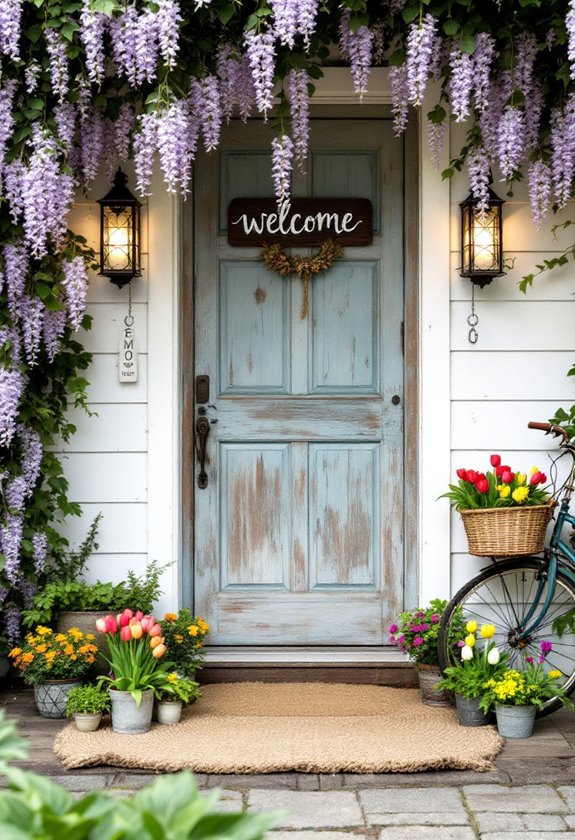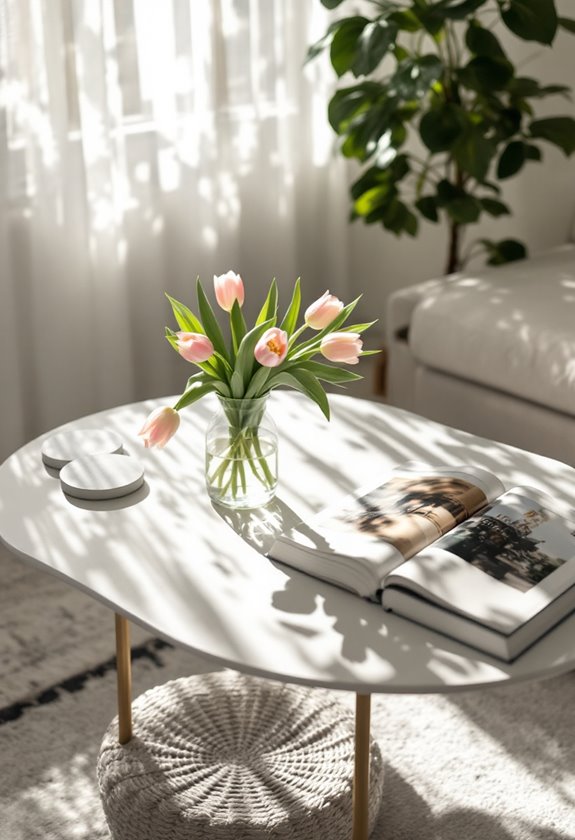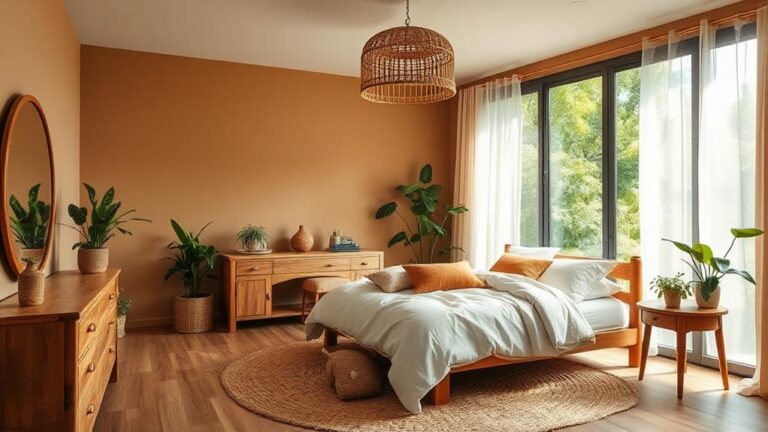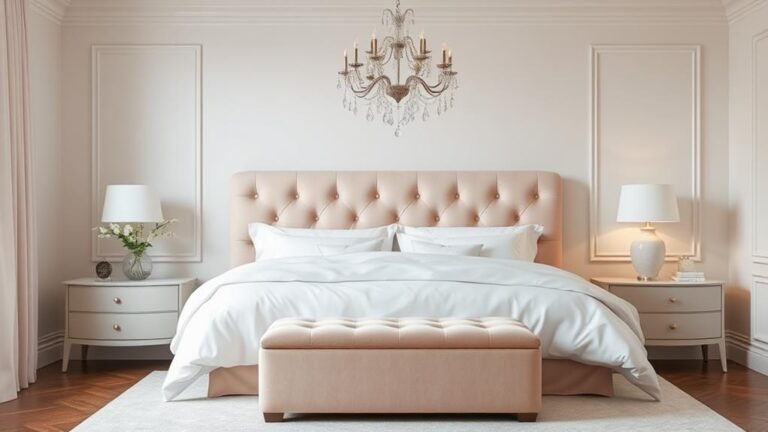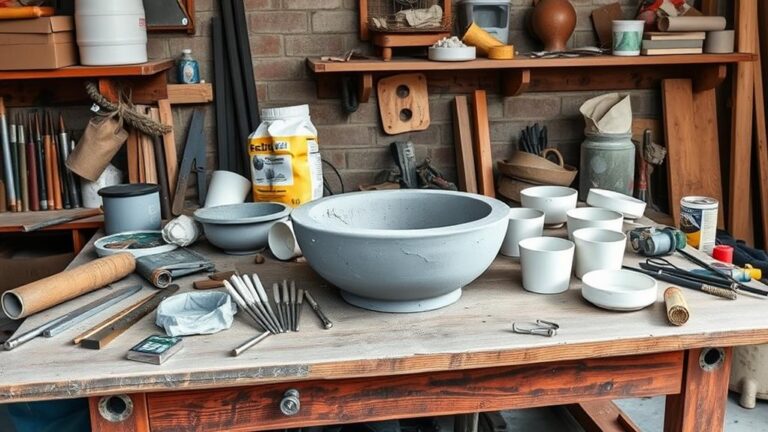When it comes to small living rooms, maximizing space and style can be a formidable challenge. A well-designed layout is pivotal, but where do you start? From optimizing furniture placement to harnessing the power of mirrors and light colors, the possibilities are vast. However, it’s not just about aesthetics; it’s also about creating a functional space that meets your needs. By exploring the right combination of design elements, you can transform a small room into a stylish and spacious oasis. But what specific strategies will yield the best results, and how can you apply them to your own space?
Optimize Your Furniture Layout

Harmony is key when it comes to optimizing the furniture layout in a small living room. To achieve this balance, consider the “traffic lane” concept, where the path between furniture pieces is at least 30-40 inches wide to facilitate smooth movement.
According to interior designer, Emily Henderson, “the goal is to create a sense of flow, making it easy to navigate the room without feeling cramped or claustrophobic.” When arranging furniture placement, optimize room arrangement by grouping functional zones, such as a seating area and a workspace, and leaving sufficient space between them.
For instance, place a console table behind a sofa to create a sense of separation without obstructing the flow. This thoughtful approach will help you create a functional and aesthetically pleasing space.
Use Mirrors for Illusion

By thoughtfully optimizing the furniture layout in a small living room, homeowners can considerably enhance the space’s functionality and aesthetic appeal. However, when space is limited, strategically incorporating reflective surfaces can create the illusion of more square footage. “Mirror placement is indispensable in small rooms,” notes interior designer Emily Henderson. “A well-placed mirror can create the illusion of depth, making the space feel more spacious.”
For ideal results, place a large mirror opposite a window to reflect natural light and make the most of the space. Conversely, a smaller mirror can be strategically positioned to create a sense of continuity between rooms, further enhancing the sense of expansiveness in a compact living area.
Choose Light Colors

While designing a small living room, it is essential to ponder the impact of color on spatial perception, as a well-chosen palette can profoundly influence the room’s ambiance and perceived size.
Choosing light colors is a simple yet effective strategy to create the illusion of more space. Soft, pastel hues and creamy whites can reflect light, making the room appear brighter and more spacious. Opt for soft lighting to complement your color scheme, as harsh shadows can make a room feel cramped.
Leverage natural light by keeping windows unobstructed and using sheer curtains to filter the sun’s rays. By incorporating light colors and thoughtful lighting, you can create a sense of airiness and openness in your small living room. This thoughtful approach can greatly enhance the room’s overall aesthetic and functionality.
Select Multifunctional Pieces

In a small living room, furniture can be both a necessity and a hindrance to the space’s overall flow. To counter this, consider selecting multifunctional pieces that serve dual purposes, such as a storage ottoman or a console table with built-in shelving.
Dual-purpose furnishings can help optimize the room’s functionality while maintaining a sense of openness. For example, incorporating convertible seating options, like a sofa bed or a chaise lounge with storage, can greatly enhance the room’s versatility. As interior designer, Sarah Jones, notes, “Multifunctional pieces are essential in small spaces, as they allow homeowners to prioritize functionality without sacrificing style.” By thoughtfully choosing multifunctional pieces, you can create a more efficient and stylish living room.
Rethink Your Coffee Table
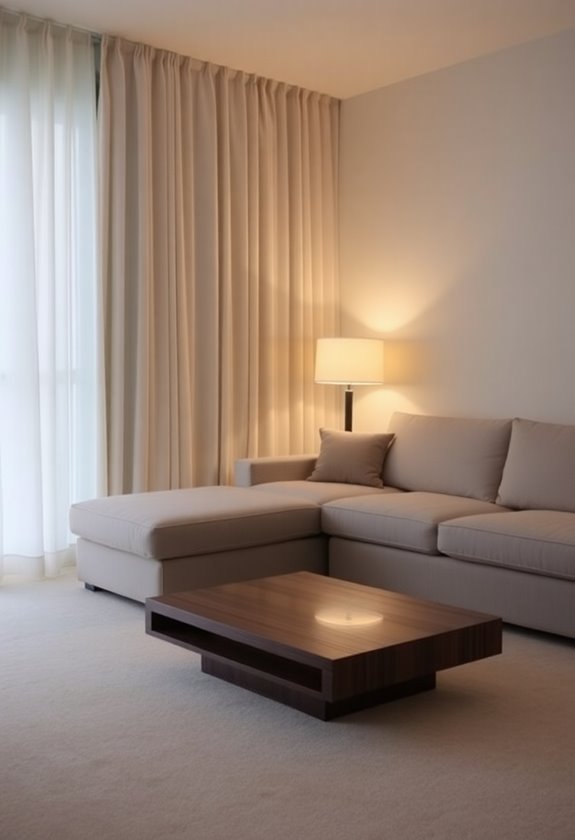
A conventional coffee table can often consume valuable space in a small living room. In such cases, rethinking the traditional coffee table setup can greatly enhance spatial functionality.
Consider alternatives such as multi-level coffee tables that provide storage and display space while maintaining a sleek, minimalist aesthetic. Convertible ottoman coffee tables are another innovative solution, offering seating and storage options in one versatile piece.
- A stack of vintage books on a lower shelf of a multi-level coffee table
- A minimalist vase on a floating shelf above the main surface
- A storage ottoman with a tray serving as a coffee table
- A geometric-patterned rug defining the seating area around the coffee table
- Ambient lighting from a pendant fixture above the coffee table
Add Plants for Texture
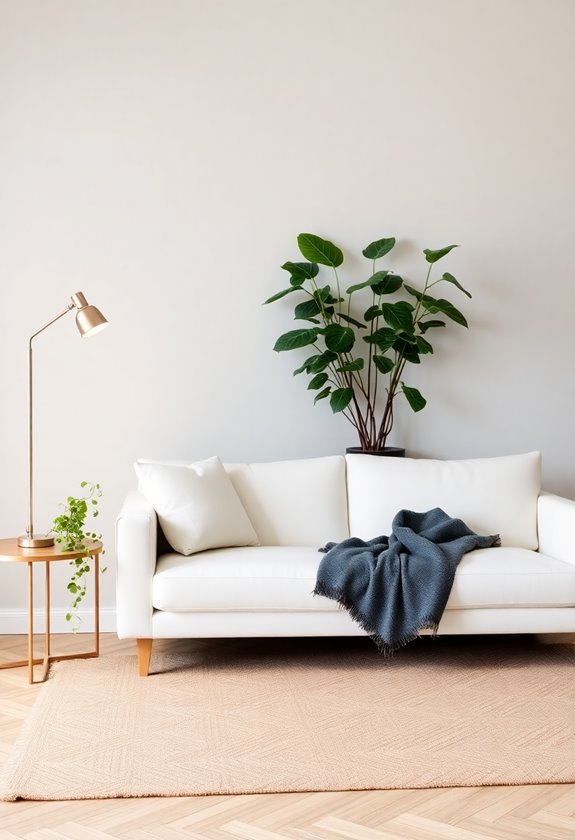
Bringing plants into a small living room not only adds a touch of natural beauty but also introduces varied textures to the space. Add trailing plants with delicate tendrils or velvety leaves to create depth and visual interest.
Use hanging planters to suspend lush greenery from the ceiling, adding an organic element without cluttering the floor. According to interior designer, Sarah Jones, “Hanging planters can create a sense of height while maintaining a sense of openness in small spaces.”
Mix and match different plant species with varying textures to create a visually appealing display. Combine smooth-leaved plants with those featuring fuzzy or ruffled leaves to add depth and dimension to your small living room.
Utilize Vertical Space
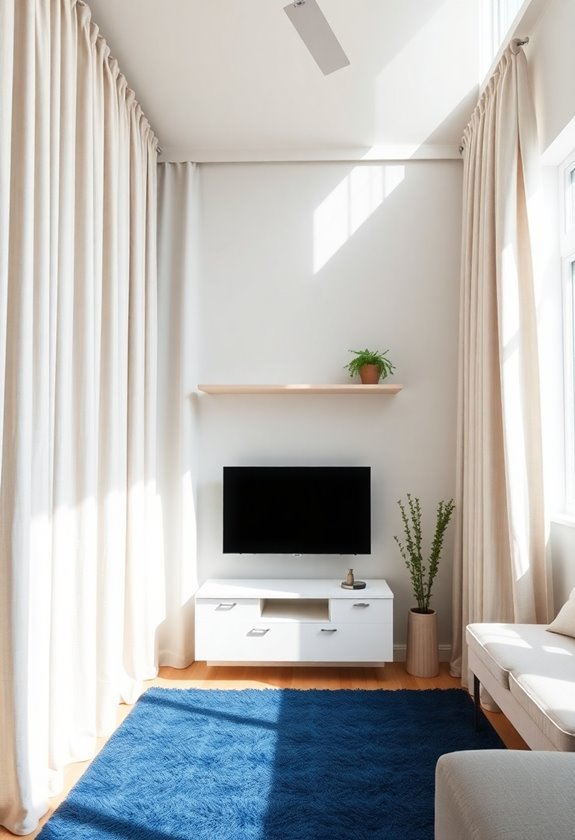
To maximize the potential of a small living room, consider the often-overlooked vertical space. By drawing the eye upwards, you can create the illusion of more space and make the most of your compact room. Effective use of vertical space can be achieved through various design elements.
- Mount shelves above a sofa or fireplace to display decorative items and create a sense of height.
- Utilize floating shelves to add storage and visual interest without cluttering the floor.
- Hang floor-to-ceiling curtains to draw the eye upwards and create a sense of grandeur.
- Install a statement light fixture or chandelier to add drama and verticality.
- Display a collection of framed artwork or prints to create a visually appealing gallery wall.
Invest in Ottoman Storage
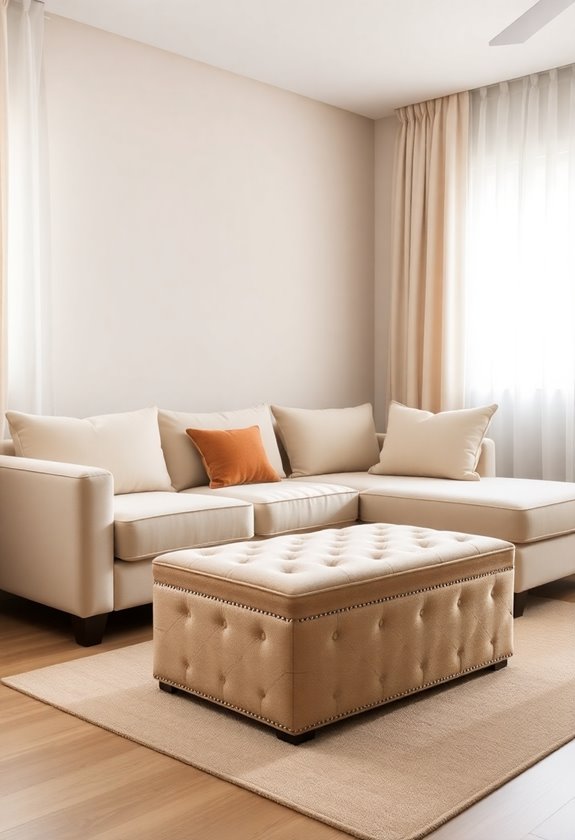
Capitalizing on the available vertical space in a small living room can greatly contribute to its overall aesthetic, but effective space management also involves optimizing furniture pieces. Consider multi-purpose ottomans, which serve as both additional seating and hidden storage solutions. Select upholstered ottomans that complement the room’s décor, while also providing a practical space for stashing items such as throw blankets, books, or linens.
“Ottomans with storage can be a game-changer for small living rooms,” says interior designer Emily Williams. “They keep clutter at bay while also offering extra seating for guests.” By investing in ottoman storage, you can create a more streamlined and functional living space that exudes style and sophistication. This innovative approach to furniture design can greatly enhance the ambiance of your small living room.
Create a Focal Point
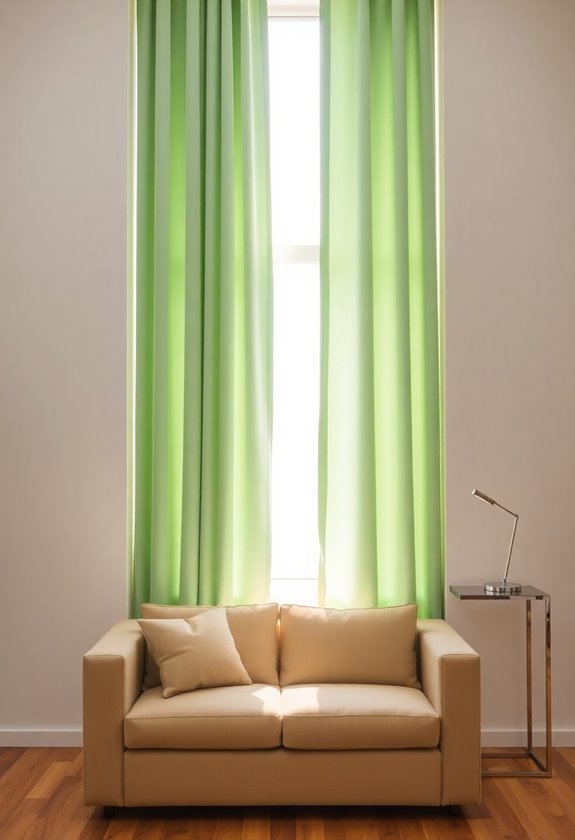
Creating a focal point in a small living room is essential for drawing the eye to a specific area and adding visual interest to the space. A well-designed focal point can accentuate architectural features, create visual interest, and guide the viewer’s gaze through the room.
For a unique and eye-catching effect, consider these ideas:
- A statement light fixture above a seating area or console table
- A vibrant piece of artwork or sculpture that adds a pop of color
- A floor-to-ceiling window treatment that highlights the view
- A bold patterned rug that defines the seating area
- A decorative fireplace or mantel that becomes the room’s centerpiece
Rearrange Your Room Layout

By establishing a focal point in a small living room, you’ve taken the first step in crafting a visually appealing space. Rethink furniture arrangement to optimize the floor plan and create a harmonious balance between functionality and aesthetics.
According to interior designer, Jessica Lagrange, “When rearranging a small room, prioritize circulation paths to guarantee a sense of flow and ease of movement.” Consider the room’s dimensions and the location of doors, windows, and any architectural features. Optimize the floor plan by creating zones for different activities, such as a reading nook or a conversation area. This thoughtful approach will help you maximize the space and create a beautiful, functional living area that feels larger than it is.
Minimize Clutter and Mess
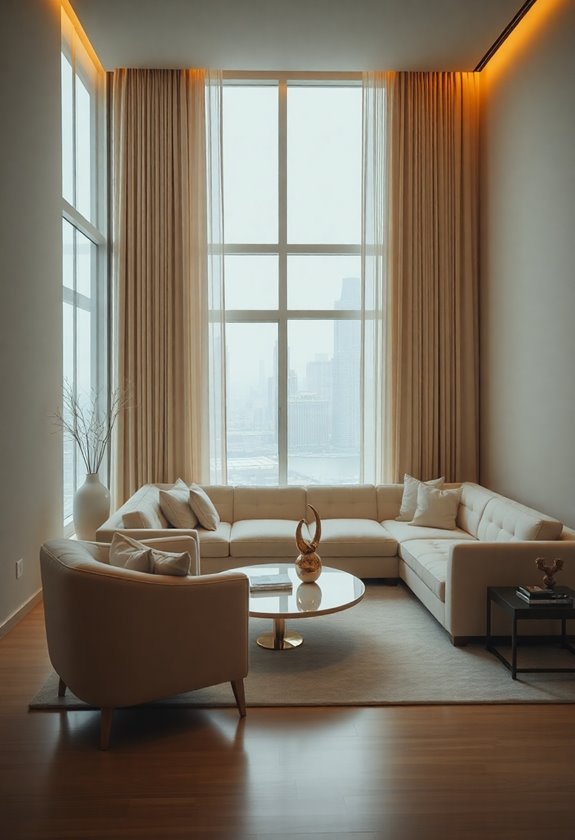
Effective small living room design relies on maintaining a clutter-free environment. A cluttered space can overwhelm the senses and reduce visual distractions.
To create a clean and inviting atmosphere, conceal unsightly items and implement thoughtful organizational strategies. Consider these elements to inspire a clutter-free space:
- A minimalist coffee table with a sleek, low-profile design
- A floor lamp with a slim base to reduce visual clutter
- A statement piece of artwork to draw the eye away from cluttered areas
- A console table with a decorative tray to corral small items
- A low-maintenance plant to bring in a touch of greenery without creating clutter.
Incorporate Hidden Storage
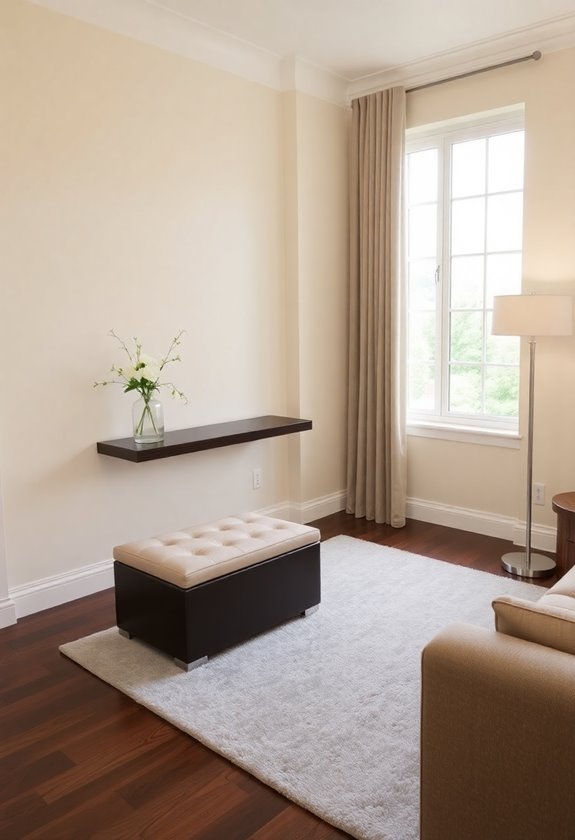
Incorporating hidden storage in a small living room is essential for maintaining the illusion of a larger space. By utilizing hidden shelves and concealed cabinets, you can create a sense of openness and airiness. These clever storage solutions allow you to keep essential items out of sight, reducing visual clutter and making the room feel more spacious.
“Hidden storage is a game-changer in small living rooms,” says interior designer, Jane Smith. “It keeps the space organized while maintaining a sense of flow and visual harmony.” Consider installing hidden shelves behind a false wall or incorporating concealed cabinets into your furniture design to maximize storage and style in your small living room.
Utilize Corner Spaces

Efficiency is key when it comes to maximizing the potential of a small living room. One often-overlooked area is the corner space, which can be effectively utilized to enhance the room’s functionality and aesthetic appeal. By implementing clever design solutions, homeowners can transform these areas into valuable assets.
To make the most of corner spaces, consider the following ideas:
- Utilize corner shelves to display decorative items, books, or plants, adding visual interest and depth to the room.
- Maximize corner seating by incorporating a curved sofa or a corner bench, creating a cozy nook for relaxation.
- Install a corner desk or workspace to provide a dedicated area for productivity.
- Add a floor-to-ceiling corner storage unit to keep clutter at bay and maintain a sense of openness.
- Incorporate a corner planter or trellis to bring in a touch of natural beauty.
Add Ambient Lighting
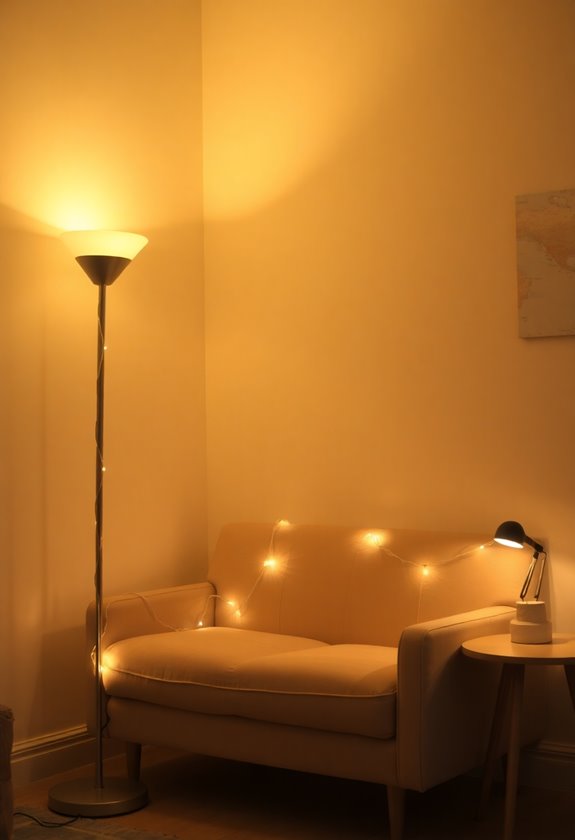
A well-designed lighting scheme can elevate the ambiance of a small living room, making it feel more inviting and relaxing. To achieve this, consider layer lighting, which involves combining different light sources to create a balanced and visually appealing atmosphere.
This approach can include a combination of overhead lighting, table lamps, and floor lamps. By installing dimmers, you can adjust the light levels to suit different moods and activities. According to lighting experts, dimmers are essential for creating a flexible and adaptable lighting scheme.
Incorporate Textured Rugs
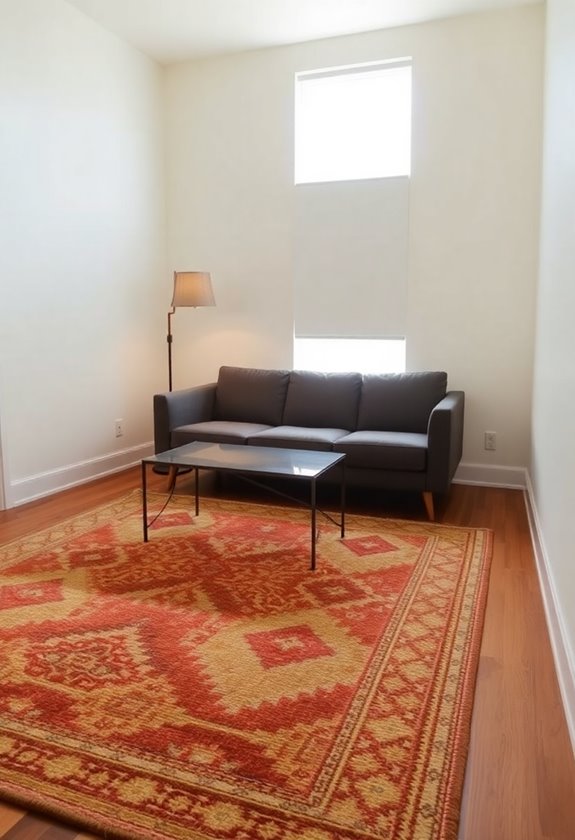
When carefully selecting elements to enhance a small living room, the addition of textured rugs can be a game-changer. Incorporating diverse textures through rugs can add depth and visual interest, effectively distracting from the room’s compact size.
To create a cozy atmosphere, consider utilizing shaggy rugs, which can add a warm and inviting feel to the space.
- Deep-pile shag rugs in neutral tones for a calming ambiance
- Layer textured rugs with natural fibers, such as sisal or jute, for a organic look
- Moroccan-inspired berber rugs with bold patterns for added personality
- Faux fur rugs in rich colors for a luxurious feel
- Natural fiber rugs with subtle patterns for a calming and organic atmosphere
Hang Curtains High

Elevating window treatments can greatly impact the perception of a small living room’s size. To create the illusion of height, hang curtains at ceiling height, rather than just above the window frame. This simple trick draws the eye upwards, elongating the room and creating a sense of grandeur.
According to interior designer, Maxwell Alexander, “hanging curtains high not only adds visual interest, but also creates a sense of airiness, making the room feel larger.” By using curtains to create an illusion of height, you can effectively expand the space without physically altering the room. This clever technique allows you to maximize the potential of your small living room, making it feel more spacious and inviting.
Employ a Neutral Palette
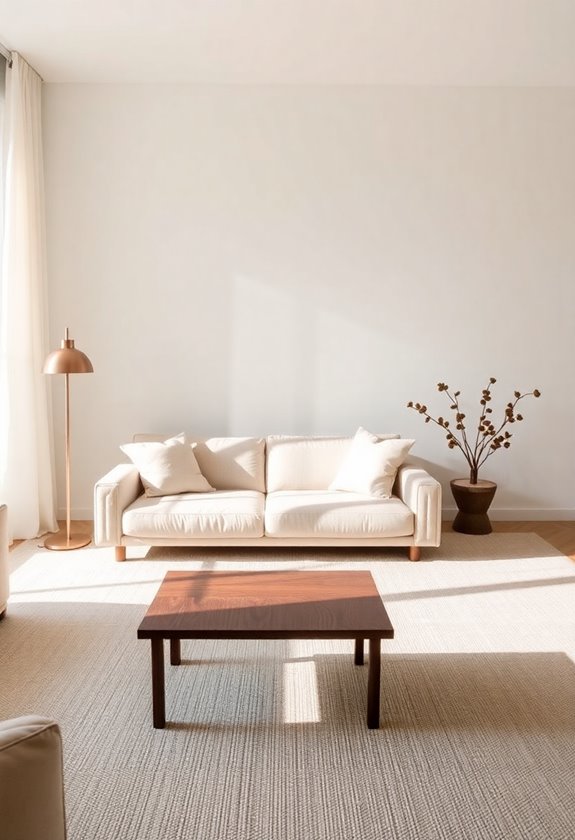
- Soft cream walls paired with natural wood accents
- Warm beige tones complemented by woven baskets
- Light gray furniture set against a backdrop of reclaimed wood
- Earthy terracotta hues merged with jute rugs
- Creamy whites balanced by rich, organic textiles
Display Personal Items

By incorporating personal items into your small living room design, you can instantly inject character and warmth into the space. Display family photos on a minimalist shelf or gallery wall to add a touch of personality.
Consider displaying decorative trinkets, such as vintage collectibles or sculptural objects, on a decorative side table or console shelf. According to interior designer, Emily Henderson, “Personal items can make a space feel truly unique and special.”
When selecting items to display, choose those that tell a story or evoke a sense of nostalgia. By thoughtfully curating your personal items, you can create a space that not only feels welcoming but also reflects your individual style and personality. This approach also allows for easy rearrangement and updating of your decor.
Use a Console Table

A well-placed console table can serve as a versatile and space-saving solution in a small living room, providing a convenient spot for displaying decorative items, storing essentials, and creating a sense of separation between the room and adjacent areas.
This piece of furniture can be elevated by incorporating stylish and functional elements. Some ideas to ponder include:
- Adding a vase or sculpture to create visual interest
- Using floating shelves above the console table to maximize storage and display space
- Incorporating storage baskets or bins to keep essentials within easy reach
- Displaying a statement piece of art or mirror to create the illusion of a larger space
- Placing a decorative tray or bowl to corral small items and add texture
Balance Room Proportions

Maintaining a sense of balance is crucial in small living rooms, as disproportionate elements can make the space feel cluttered and overwhelming. To achieve balance, consider proportional scale when selecting furniture. A large piece can overwhelm the space, while smaller pieces can create a sense of emptiness.
Interior designer, Emily Henderson, notes, “Create visual balance by distributing visual weight throughout the room.” This can be achieved by pairing bold patterns or colors with neutral elements. For example, a statement piece of artwork can be balanced by a neutral-colored sofa.

